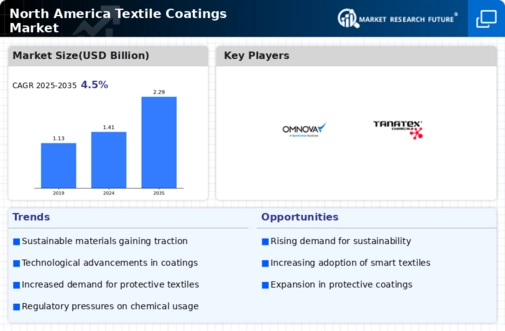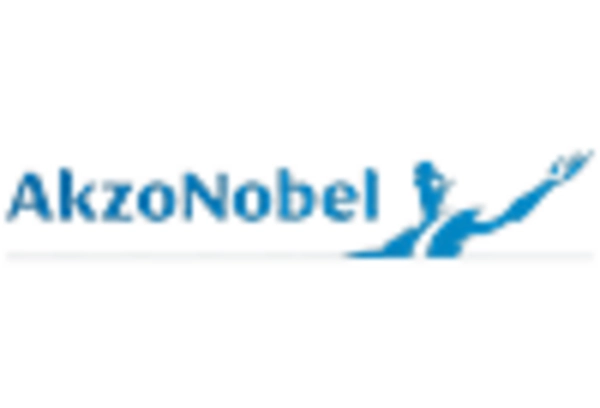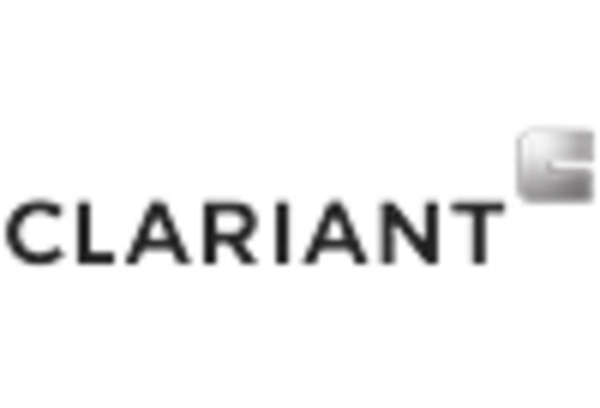Market Trends
Key Emerging Trends in the North America Textile Coatings Market
Technology, sustainability, and customer preferences are driving trends in the North America Textile Coatings Market. This market is trending toward functional and performance textile coatings. Manufacturers are creating coatings that improve textile durability, usefulness, and protection as customers want textiles with water resistance, flame retardancy, and antimicrobial qualities. This trend follows the rise of performance-driven textiles in fashion, home textiles, and industrial applications.
The North America Textile Coatings Market emphasizes sustainability due to environmental awareness and the necessity for eco-friendly solutions. Textile coating manufacturers are using water-based coatings and bio-based polymers to lessen their environmental effect. Coatings that prolong textile life are also becoming more popular, encouraging circular and ethical consumption. Consumers that value sustainability have driven the development of eco-friendly textile coatings.
Digital printing is affecting the North American Textile Coatings Market by allowing elaborate and customizable patterns on coated fabrics. Digital printing helps producers to make visually attractive and individualized textiles by printing high-resolution and multicolor onto coated materials. Consumers want customized and attractive coated materials, therefore this trend matches textile industry need for personalization and distinctive patterns.
Smart textile coatings, which include technology for usefulness, are becoming popular. Conductive coatings with sensors for monitoring and response characteristics for diverse applications are becoming popular. These smart coatings are used in sports and fitness, healthcare, and industrial applications to create intelligent fabrics that adapt to changing environmental circumstances and human demands.
Waterproof and water-repellent coatings are growing in the North America Textile Coatings Market to meet the need for water-resistant, breathable fabrics. Outdoor gear, athletics, and performance fabrics employ these coatings to protect against rain and moisture while providing comfort. Popular waterproof coatings reflect the trend toward utilitarian and adaptable fabrics for active lives.
These coatings protect fabrics against microbial contamination by inhibiting bacteria and virus development. As consumers prioritize cleanliness and infection prevention, medical textiles, PPE, and household textiles have seen increased demand for antimicrobial coatings.
North American textile coating producers and fashion designers are collaborating more to create innovative coated fabrics. Collaborations provide unique textile coatings with usefulness, aesthetics, and sustainability. Manufacturers and fashion companies collaborate to keep ahead of market trends and provide consumers unique coated textile goods.









Leave a Comment